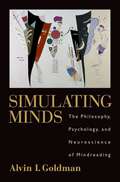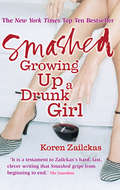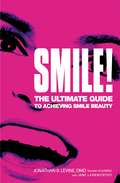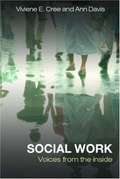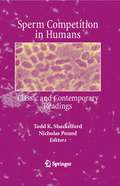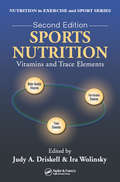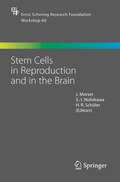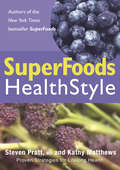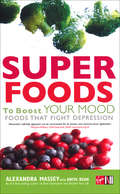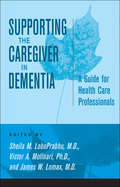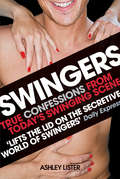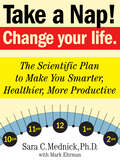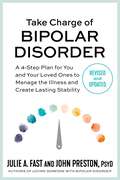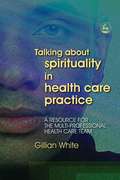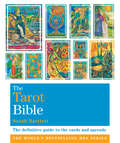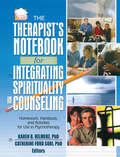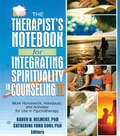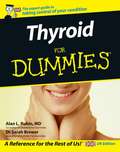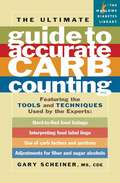- Table View
- List View
Simulating Minds: The Philosophy, Psychology, and Neuroscience of Mindreading (Philosophy of Mind)
by Alvin I. GoldmanPeople are minded creatures; we have thoughts, feelings and emotions. More intriguingly, we grasp our own mental states, and conduct the business of ascribing them to ourselves and others without instruction in formal psychology. How do we do this? And what are the dimensions of our grasp of the mental realm? In this book, Alvin I. Goldman explores these questions with the tools of philosophy, developmental psychology, social psychology and cognitive neuroscience. He refines an approach called simulation theory, which starts from the familiar idea that we understand others by putting ourselves in their mental shoes. Can this intuitive idea be rendered precise in a philosophically respectable manner, without allowing simulation to collapse into theorizing? Given a suitable definition, do empirical results support the notion that minds literally create (or attempt to create) surrogates of other peoples mental states in the process of mindreading? Goldman amasses a surprising array of evidence from psychology and neuroscience that supports this hypothesis.
Smashed: Growing Up A Drunk Girl
by Koren ZailckasThe day Koren turned fourteen she tasted alcohol for the first time. At fifteen she was piecing together forgotten fragments of drink, men and misplaced clothes. At sixteen she was being carried through hospital doors unconscious. And so it began...Brought up by loving parents in a stable middle-class home, Koren was a sweet and altogether normal child. Yet from her mid-teens until her early twenties, she thought nothing of regularly drinking herself into a state of amnesia. Alcohol became her safeguard and prop, providing her with a self-confidence she couldn't otherwise feel. And whilst drinking to excess was perfectly acceptable, even actively encouraged, amongst her friends, it quickly reached a destructive monotony that bordered on dependency. It took a number of terrifying incidents - from stumbling home alone covered in vomit to waking up naked in bed unsure of whether she had lost her virginity - before Koren could finally say to herself enough was enough and seek help for her problem.Smashed is the shocking but all-too-recognisable story of a young woman coming of age within a society that finds it easier to turn a blind eye to binge-drinking than address the problem head on. Beautifully written and brutally honest, compelling without preaching, this is a book that demands to be read.
Smile!: The Ultimate Guide to Achieving Smile Beauty
by Jonathan B. Levine Jane LarkworthyRenowned dentist and creator of the GoSMILE product line Dr. Levine offers this complete guide to getting a whiter, brighter smile. 15 photos & illustrations.
Social Work: Voices from the inside (PDF)
by Viviene E CreeSocial Work: Voices from the Inside offers unique insight into social work from the perspectives of those 'on the inside', that is, service users, carers and practitioners.
Sperm Competition in Humans: Classic and Contemporary Readings
by Todd K. Shackelford Nicholas PoundIn species with internal fertilization, sperm competition occurs when the sperm of two or more males simultaneously occupy the reproductive tract of a female and compete to fertilize an egg (Parker, 1970). A large body of empirical research has demonstrated that, as predicted by sperm competition theory, males and females in many species possess anatomical, behavioral, and physiological adaptations that have evolved to deal with the adaptive challenges associated with sperm competition. Moreover, in recent years, evolutionary biologists and psychologists have begun to examine the extent to which sperm competition may have been an important selective pressure during human evolution. Some research has suggested that male humans, like males of many bird, insect, and rodent species, might be able to adjust the number of sperm they inseminate according to the risk of sperm competition. Other research has examined whether such responses might be accompanied by psychological changes that motivate human males to pursue copulations when the risk of sperm competition is high. Furthermore, there is research suggesting that aspects of human penile anatomy might function to enhance success in sperm competition. Much of this work has been controversial; some of the findings have been disputed and others have been greeted with skepticism. However, the idea that some aspects of human psychology and behavior might best be understood as adaptations to sperm competition remains intriguing and, in certain cases, very persuasive.
The Sphere of Attention: Context and Margin (Contributions to Phenomenology #54)
by P. Sven ArvidsonThe phone call came mid-afternoon in February of 1996. The program chair for the annual meeting for the Southern Society of Philosophy and Psychology wanted to make sure he had the facts right. “This is somewhat unusual…” he began. “You’re a philosophy professor who wants to present to psychologists in the psychology portion of the meeting.” “That’s right.” “Well your paper was accepted for that part of the program but the others just wanted me to check and make sure that’s where you want to be presenting.” “That’s right.” Reassured, the professor wished me luck and said good-bye. In my session at the meeting, I was the last to present. As my time approached, the medium-sized room slowly became crowded. I dreamed that these psychologists had left their other meetings early to make sure to catch my presentation on the use of metaphors in attention research. As I arose to present I noticed that the half-full room had become standing room only! Finally, after years of feeling as if I was struggling alone in promoting and defending a phenomenology of attention, I had an eager audience for my message. My persistence had paid off. I delivered my message with passion.
Sports Nutrition: Vitamins and Trace Elements, Second Edition
by Ira Wolinsky Judy A. DriskellIn competitive sports where an extra breath or a millisecond quicker neural response can spell the difference between fame and mediocrity, a number of myths have persisted around the impact of what might be considered megadoses of various vitamins and trace elements. We do know that a growing body of research indicates that work capacity, oxygen co
Sports Nutrition: Vitamins and Trace Elements, Second Edition
by Ira Wolinsky Judy A. DriskellIn competitive sports where an extra breath or a millisecond quicker neural response can spell the difference between fame and mediocrity, a number of myths have persisted around the impact of what might be considered megadoses of various vitamins and trace elements. We do know that a growing body of research indicates that work capacity, oxygen co
Stem Cells in Reproduction and in the Brain (Ernst Schering Foundation Symposium Proceedings #60)
by John Morser S. I. Nishikawa H. R. SchoelerExpectations of the potential of regenerative medicine have risen recently because of exciting research results. This book contains contributions from leading researchers who describe their successes and the problems that remain in converting the hopes into concrete therapies. The focus of the book is on the role of stem cells in two main areas -- reproduction and the brain -- described from molecular, cellular, in vivo and clinical perspectives.
SuperFoods Healthstyle: A Year Of Rejuvenation (Superfoods Ser.)
by Kathy Matthews Steven PrattOrganized around the four seasons, this year-long, day-by-day programme builds on the fourteen SuperFoods introduced in book one and is aimed at anyone who is interested in taking stock of their lives- anyone who wants to do an 'audit' of where they're at in terms of health. Practical and easy to follow, it shows you how to maximize your physical activities for improved levels of fitness, and how to tweak your diet for optimum nutrition. As a bonus, readers will discover how to deal with stress more effectively with a variety of coping mechanisms that can be put into action with little effort. Taking advantage of the rhythms of the seasons, SuperFoods Healthstyle also offers a range of simple dietary changes that can make a real difference to your health - everything from the Top Winter Breakfasts to the best Summer Salads, from how to incorporate foods containing folic acid into your diet to help beat depression, to how treat inflammation fast and effectively. There's even a 'Healthstyle Four-week Fast-track Diet' which is designed to kick-start your metabolism! Practical, informative and user-friendly, this essential guide will revolutionize the way you think about your health and fitness.
Superfoods to Boost Your Mood: Foods That Fight Depression
by Alexandra Massey Anita BeanMore and more people are recognising the relationship between diet and emotional health. Scientific studies have identified nutrients in certain foods believed to have a dramatic effect in fighting low level depression and mental sluggishness caused by unhealthy, highly processed foods.Alexandra Massey and Anita Bean have devised an invaluable guide to changing the way you feel by changing what you put on your plate. As well as exploring the links between lifestyle, diet and disposition, they provide 10 depression-busting superfoods, plus three separate 7-dayeating plans to beat the blues and boost your immune system. Their alternatives to high fat, salty and sugary processed meals will help you combat fatigue, anxiety, stress and depression and change your life and your relationship with food.
Supporting the Caregiver in Dementia: A Guide for Health Care Professionals
by Sheila M. LoboprabhuDementia is one of the greatest challenges facing seniors and their caregivers around the globe. Developed by experts in both research and practice, this guide for mental health clinicians explores the experience of caregiving in dementia, discussing the latest research developments and sharing clinical pearls of wisdom that can easily be translated to daily practice.The contributors explore the history of caregiving and then examine the current demographics of caregivers for persons with dementia. They discuss who provides care, the settings in which it is delivered, and the rewards and burdens of caregiving. They place special emphasis on understanding the psychological needs of both the person with dementia and the caregiver, as well as interpersonal bonds, spiritual dimensions, and reactions to grief and loss. Using a multidisciplinary approach to treatment for caregivers, this book addresses the role of pharmacotherapy, individual and family interventions, and social supports. Finally, the authors reflect on societal issues such as health care policies, ethnic elders, and ethics.This volume offers health professionals insights into the daily lives of caregivers, along with tools to provide their patients with the support they need.
Swingers - True confessions from today's swinging scene: True Confessions From Today's Swinging Scene
by Ashley ListerAshley Lister, a freelance writer, author and reporter, has met countless singles, couples and triples involved in the UK's recreational sex scene. Meeting people who have turned their fantasy lives into reality, he uncovers today's swinging Britain and reveals the sexy, shocking and true secrets of what happens behind closed doors.
Take a Nap! Change Your Life.: The Scientific Plan To Make You Smarter, Healthier, More Productive
by Mark Ehrman Sara C. MednickImagine a product that increases alertness, boosts creativity, reduces stress, improves perception, stamina, motor skills, and accuracy, enhances your sex life, helps you make better decisions, keeps you looking younger, aids in weight loss, reduces the risk of heart attack, elevates your mood, and strengthens memory. Now imagine that this product is nontoxic, has no dangerous side effects, and, best of all, is absolutely free. This miracle drug is, in fact, nothing more than the nap: the right nap at the right time. The work of Sara C. Mednick, Ph.D., a researcher at the Salk Institute and the leading authority on the study of the nap, Take a Nap! Change Your Life. is the scientifically-based breakthrough program that shows how we can fight the fatigue epidemic—which afflicts an estimated 50 million Americans—through a custom-designed nap. Take a Nap! Change Your Life. explains the five stages of the sleep cycle, particularly Stage Two, Slow Wave Sleep, and REM, and the benefits each one provides; how to assess your tiredness and set up a personal sleep profile; and how to neutralize the voice in your head that tells you napping is a sign of laziness. (Not that anyone would have called JFK, Churchill, Einstein, or Napoleon a slug-a-bed.) Using the unique Nap Wheel on the cover and interior graphs and charts, it shows us exactly when our optimum napping time is, and exactly how long we should try to sleep—even how it’s possible to design a nap to inspire creativity one day, and the next day design one to help us with our memory. There are tips on how to create the right nap environment, a 16-step technique for falling asleep, a six-week napping workbook, and more.
Take Charge of Bipolar Disorder: A 4-Step Plan for You and Your Loved Ones to Manage the Illness and Create Lasting Stability
by John Preston Julie A. FastThe authors offer those with Bipolar Disorder a four-step plan towards managing the illness and creating lasting stability.
Talking About Spirituality in Health Care Practice: A Resource for the Multi-Professional Health Care Team
by Gillian WhiteHealth care professionals who endeavour to work holistically face a number of questions about spirituality. What is meant by `spirituality' as opposed to `religion'? What is its specific relevance to health care practice? This accessible book provides answers to these questions and offers a model for personal and professional development. Gillian White sets out a framework within which health care professionals can discuss spirituality and equip themselves to respond appropriately to the spiritual concerns of their patient in daily practice. She draws on her experience of sharing and discussing spirituality and spiritual care with other health care professionals and proposes that multi-professional health care teams should talk about spirituality in challenging but safe environments to develop shared understanding of it, and to increase their confidence about integrating spiritual care into their daily practise. This text is a useful contribution to the multi-disciplinary, whole-person approach in health care and will be of interest to all health care professionals, nursing staff and students in these fields.
Talking About Spirituality in Health Care Practice: A Resource for the Multi-Professional Health Care Team (PDF)
by Gillian WhiteHealth care professionals who endeavour to work holistically face a number of questions about spirituality. What is meant by `spirituality' as opposed to `religion'? What is its specific relevance to health care practice? This accessible book provides answers to these questions and offers a model for personal and professional development. Gillian White sets out a framework within which health care professionals can discuss spirituality and equip themselves to respond appropriately to the spiritual concerns of their patient in daily practice. She draws on her experience of sharing and discussing spirituality and spiritual care with other health care professionals and proposes that multi-professional health care teams should talk about spirituality in challenging but safe environments to develop shared understanding of it, and to increase their confidence about integrating spiritual care into their daily practise. This text is a useful contribution to the multi-disciplinary, whole-person approach in health care and will be of interest to all health care professionals, nursing staff and students in these fields.
The Tarot Bible: Godsfield Bibles (Godsfield Bible Ser. #7)
by Sarah BartlettThe Tarot Bible teaches you everything you need to know about tarot, including how to choose the right pack of cards and how to ask questions. It features interpretations for every card of the Major and Minor Arcana, practical advice on how to give readings and how you can use tarot in combination with other divination techniques such as numerology, astrology and crystals. The book also features over 30 tarot layouts that you can use to gain insights into yourself, your relationships and your future.
The Therapist's Notebook for Integrating Spirituality in Counseling I: Homework, Handouts, and Activities for Use in Psychotherapy
by Karen B. Helmeke Catherine Ford SoriLearn to initiate the integration of your clients’ spirituality as an effective practical intervention. A client’s spiritual and religious beliefs can be an effective springboard for productive therapy. How can a therapist sensitively prepare for the task? The Therapist’s Notebook for Integrating Spirituality in Counseling is the first volume of a comprehensive two-volume resource that provides practical interventions from a wide range of backgrounds and theoretical perspectives. This volume helps prepare clinicians to undertake and initiate the integration of spirituality in therapy with clients and provides easy-to-follow examples. The book provides a helpful starting point to address a broad range of topics and problems. The chapters of The Therapist’s Notebook for Integrating Spirituality in Counseling are grouped into five sections: Therapist Preparation and Professional Development; Assessment of Spirituality; Integrating Spirituality in Couples Therapy; Specific Techniques and/or Topics Used in Integrating Spirituality; and Use of Scripture, Prayer, and Other Spiritual Practices. Designed to be clinician-friendly, each chapter also includes sections on resources where counselors can learn more about the topic or technique used in the chapter—as well as suggested books, articles, chapters, videos, and Web sites to recommend to clients. Each chapter utilizes similar formatting to remain clear and easy-to-follow that includes objectives, rationale for use, instructions, brief vignette, suggestions for follow-up, contraindications, references, professional readings and resources, and bibliotherapy sources for the client. The first volume of The Therapist’s Notebook for Integrating Spirituality in Counseling helps set a solid foundation and provides comprehensive instruction on: ethically incorporating spirituality into the therapeutic setting professional disclosure building a spiritual referral source through local clergy assessment of spirituality the spirituality-focused genogram using spirituality in couples therapy helping couples face career transitions dealing with shame addiction recovery the use of scripture and prayer overcoming trauma in Christian clients and much more! The Therapist’s Notebook for Integrating Spirituality in Counseling is a stimulating, creative resource appropriate for any clinician or counselor, from novices to experienced mental health professionals. This first volume is perfect for pastoral counselors, clergy, social workers, marriage and family therapists, counselors, psychologists, Christian counselors, educators who teach professional issues, ethics, counseling, and multicultural issues, and students.
The Therapist's Notebook for Integrating Spirituality in Counseling I: Homework, Handouts, and Activities for Use in Psychotherapy
by Karen B. Helmeke Catherine Ford SoriLearn to initiate the integration of your clients’ spirituality as an effective practical intervention. A client’s spiritual and religious beliefs can be an effective springboard for productive therapy. How can a therapist sensitively prepare for the task? The Therapist’s Notebook for Integrating Spirituality in Counseling is the first volume of a comprehensive two-volume resource that provides practical interventions from a wide range of backgrounds and theoretical perspectives. This volume helps prepare clinicians to undertake and initiate the integration of spirituality in therapy with clients and provides easy-to-follow examples. The book provides a helpful starting point to address a broad range of topics and problems. The chapters of The Therapist’s Notebook for Integrating Spirituality in Counseling are grouped into five sections: Therapist Preparation and Professional Development; Assessment of Spirituality; Integrating Spirituality in Couples Therapy; Specific Techniques and/or Topics Used in Integrating Spirituality; and Use of Scripture, Prayer, and Other Spiritual Practices. Designed to be clinician-friendly, each chapter also includes sections on resources where counselors can learn more about the topic or technique used in the chapter—as well as suggested books, articles, chapters, videos, and Web sites to recommend to clients. Each chapter utilizes similar formatting to remain clear and easy-to-follow that includes objectives, rationale for use, instructions, brief vignette, suggestions for follow-up, contraindications, references, professional readings and resources, and bibliotherapy sources for the client. The first volume of The Therapist’s Notebook for Integrating Spirituality in Counseling helps set a solid foundation and provides comprehensive instruction on: ethically incorporating spirituality into the therapeutic setting professional disclosure building a spiritual referral source through local clergy assessment of spirituality the spirituality-focused genogram using spirituality in couples therapy helping couples face career transitions dealing with shame addiction recovery the use of scripture and prayer overcoming trauma in Christian clients and much more! The Therapist’s Notebook for Integrating Spirituality in Counseling is a stimulating, creative resource appropriate for any clinician or counselor, from novices to experienced mental health professionals. This first volume is perfect for pastoral counselors, clergy, social workers, marriage and family therapists, counselors, psychologists, Christian counselors, educators who teach professional issues, ethics, counseling, and multicultural issues, and students.
The Therapist's Notebook for Integrating Spirituality in Counseling II: More Homework, Handouts, and Activities for Use in Psychotherapy
by Karen B. Helmeke Catherine Ford SoriMore activities to tap into the strength of your clients’ spiritual beliefs to achieve therapeutic goals. The Therapist’s Notebook for Integrating Spirituality in Counseling II is the second volume of a comprehensive two-volume resource that provides practical interventions from respected experts from a wide range of backgrounds and theoretical perspectives. This volume includes several practical strategies and techniques to easily incorporate spirituality into psychotherapy. You’ll find in-session activities, homework assignments, and client and therapist handouts that utilize a variety of therapeutic models and techniques and address a broad range of topics and problems. The chapters of The Therapist’s Notebook for Integrating Spirituality in Counseling II are grouped into four sections: Models of Therapy Used in Integrating Spirituality; Integrating Spirituality with Age-Specific Populations: Children, Adolescents, and the Elderly; Integrating Spirituality with Specific Multicultural Populations; and Involving Spirituality when Dealing with Illness, Loss, and Trauma. As in Volume One, each clinician-friendly chapter also includes sections on resources where the counselor can learn more about the topic or technique used in the chapter—as well as suggested books, articles, chapters, videos, and Web sites to recommend to clients. Every chapter follows the same easy-to-follow format: objectives, rationale for use, instructions, brief vignette, suggestions for follow-up, contraindications, references, professional readings and resources, and bibliotherapy sources for the client. The Therapist’s Notebook for Integrating Spirituality in Counseling II adds more useful activities and homework counselors can use in their practice, such as: using religion or spirituality in solution-oriented brief therapy “Cast of Character” counseling using early memories to explore adolescent and adult spirituality cognitive behavioral treatment of obsessive-compulsive disorder age-specific clients such as children or the elderly multicultural populations and spirituality dealing with illness, loss, and trauma recovering from fetal loss creative art techniques with caregivers in group counseling and much more! The Therapist’s Notebook for Integrating Spirituality in Counseling II provides even more creative and helpful homework and activities that are perfect for pastoral counselors, clergy, social workers, marriage and family therapists, counselors, psychologists, Christian counselors, educators who teach professional issues, ethics, counseling, and multicultural issues, and students.
The Therapist's Notebook for Integrating Spirituality in Counseling II: More Homework, Handouts, and Activities for Use in Psychotherapy
by Karen B. Helmeke Catherine Ford SoriMore activities to tap into the strength of your clients’ spiritual beliefs to achieve therapeutic goals. The Therapist’s Notebook for Integrating Spirituality in Counseling II is the second volume of a comprehensive two-volume resource that provides practical interventions from respected experts from a wide range of backgrounds and theoretical perspectives. This volume includes several practical strategies and techniques to easily incorporate spirituality into psychotherapy. You’ll find in-session activities, homework assignments, and client and therapist handouts that utilize a variety of therapeutic models and techniques and address a broad range of topics and problems. The chapters of The Therapist’s Notebook for Integrating Spirituality in Counseling II are grouped into four sections: Models of Therapy Used in Integrating Spirituality; Integrating Spirituality with Age-Specific Populations: Children, Adolescents, and the Elderly; Integrating Spirituality with Specific Multicultural Populations; and Involving Spirituality when Dealing with Illness, Loss, and Trauma. As in Volume One, each clinician-friendly chapter also includes sections on resources where the counselor can learn more about the topic or technique used in the chapter—as well as suggested books, articles, chapters, videos, and Web sites to recommend to clients. Every chapter follows the same easy-to-follow format: objectives, rationale for use, instructions, brief vignette, suggestions for follow-up, contraindications, references, professional readings and resources, and bibliotherapy sources for the client. The Therapist’s Notebook for Integrating Spirituality in Counseling II adds more useful activities and homework counselors can use in their practice, such as: using religion or spirituality in solution-oriented brief therapy “Cast of Character” counseling using early memories to explore adolescent and adult spirituality cognitive behavioral treatment of obsessive-compulsive disorder age-specific clients such as children or the elderly multicultural populations and spirituality dealing with illness, loss, and trauma recovering from fetal loss creative art techniques with caregivers in group counseling and much more! The Therapist’s Notebook for Integrating Spirituality in Counseling II provides even more creative and helpful homework and activities that are perfect for pastoral counselors, clergy, social workers, marriage and family therapists, counselors, psychologists, Christian counselors, educators who teach professional issues, ethics, counseling, and multicultural issues, and students.
Thyroid For Dummies
by Alan L. Rubin Dr. Sarah BrewerIncludes information on the latest thyroid treatments Understand and manage your thyroid condition Don't get pushed around by the little gland in your neck. Whether you suffer from an underactive or overactive thyroid, nodules, or a goitre, Thyroid For Dummies has all the jargon-free information you need to get to grips with the problem and expert advice on how to get your condition under control. Discover how to * Tell if you have a thyroid problem * Understand the treatments on offer * Deal with your condition day-to-day * Get the right diet and exercise * Manage thyroid conditions in children and older people
Thyroid For Dummies
by Alan L. Rubin Dr. Sarah BrewerIncludes information on the latest thyroid treatments Understand and manage your thyroid condition Don't get pushed around by the little gland in your neck. Whether you suffer from an underactive or overactive thyroid, nodules, or a goitre, Thyroid For Dummies has all the jargon-free information you need to get to grips with the problem and expert advice on how to get your condition under control. Discover how to * Tell if you have a thyroid problem * Understand the treatments on offer * Deal with your condition day-to-day * Get the right diet and exercise * Manage thyroid conditions in children and older people
The Ultimate Guide to Accurate Carb Counting: Featuring the Tools and Techniques Used by the Experts (Marlowe Diabetes Library)
by Gary ScheinerThe most comprehensive on accurate carb counting-a must-have for the more than 20 million people with diabetes, the 42 million with prediabetes, as well as millions of other carb-conscious eaters.Whether you're following a diet plan that requires carb-counting, you have diabetes, or simply because you are conscious of the quantity of carbs you consume, The Ultimate Guide to Accurate Carb Counting is the all-in-one resource for practically and effectively managing your carb intake. Certified diabetes educator, type 1 diabetic, and Think Like a Pancreas author Gary Scheiner focuses on carb counting in a real-world context, and his explanations and advice-in addition to being complete and thoroughly accurate-are geared towards the most common foods and eating habits. The Ultimate Guide to Accurate Carb Counting tells you everything you need to accurately keep track of your carb intake, including: The basic rationale for and the theory behind carb-counting, as well as explanations of simple to advanced techniques. There is also a comprehensive listing of exchanges, carb factors, and glycemic index values, as well as the carb and fiber values for 2,500 foods.
